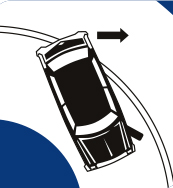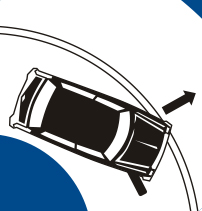Tyre pressures can also be used to help correct a handling problem, such as a tendency to understeer or oversteer.
Oversteer
When oversteer occurs, the back end of the car tends to swing around, sending the car into a spin. It is more likely in rear wheel drive cars and increases in likelihood if the engine of the car is mounted at the rear, as this increases the weight carried by the rear tyres.
To correct oversteer with tyre pressures, raise the rear tyres by 7-14 pa (1-2 psi), while maintaining the front tyre pressures.
Understeer
This can occur when you drive a car with normal tyre pressure quickly around a corner. The car doesn’t turn as fast as you turn the wheel, and tends to ‘plough-on’. It affects front wheel drive cars more than rear wheel drive, and increases front tyre wear.
To correct the problem with tyre pressures, raise the level in the front tyres by at least 14kpa (2psi) and leave the rear tyres at the recommended pressures.
In both understeer and oversteer, the tyres are losing their ability to grip the road surface. This usually happens because the speed and weight of the car is exerting a force on the tyre and deforming it so that part of the tread is no longer in contact with the road. Slowing down will correct the situation, but remember not to break drastically, slow down gradually to retain control of the vehicle.


